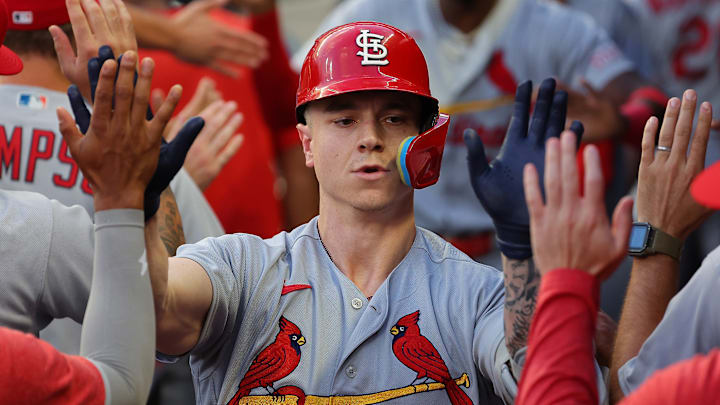Ryan Helsley
The final big-name player on the arbitration list for the Cardinals is Ryan Helsley. His projection is a bit easier than Hudson's as Helsley has been solely a reliever for the Cardinals since his promotion to the majors. Helsley has garnered just over 4 years of service time, and he has two years of arbitration left after this year.
In his 197.1 innings across 174 games, Helsley has a 2.83 ERA, 1.095 WHIP, and has struck out 235 batters. He has been a very solid reliever and closer these last two years. Injuries have been a bit of an issue for Helsley, and that will harm his arbitration case slightly. He is projected to sign for $3 million this offseason through the arbitration process.
Devin Williams is a similar enough reliever based on the statistics, and he is at the same point in the arbitration process as Ryan Helsley. Williams will have just over 4 years of service time during this offseason. Williams, a St. Louis native, has pitched 214 innings to the tune of a 1.89 ERA, a 1.028 WHIP, and 337 strikeouts. Williams is a more dominant reliever, and he is projected to receive $6.5 million this year through arbitration. Helsley's salary is half of Williams's, and if anything, that makes it seem like Helsley's projection is a little low.
Paul Sewald after the 2021 season is another reasonable comparison. Sewald was at a similar service time at that point in his career, and his numbers are close to Helsley's. Through 212 innings, Sewald had a 4.75 ERA, a 3.75 FIP, a 1.259 WHIP, and had struck out 255 batters. Helsley has been better at limiting runs, but the remaining stats are close. Sewald agreed to a contract worth $1.75 million after the 2021 season. Helsley is projected to sign for nearly double what Sewald got at that point. Performance and inflation would indicate that Helsely would get paid more than Sewald did that offseason.
